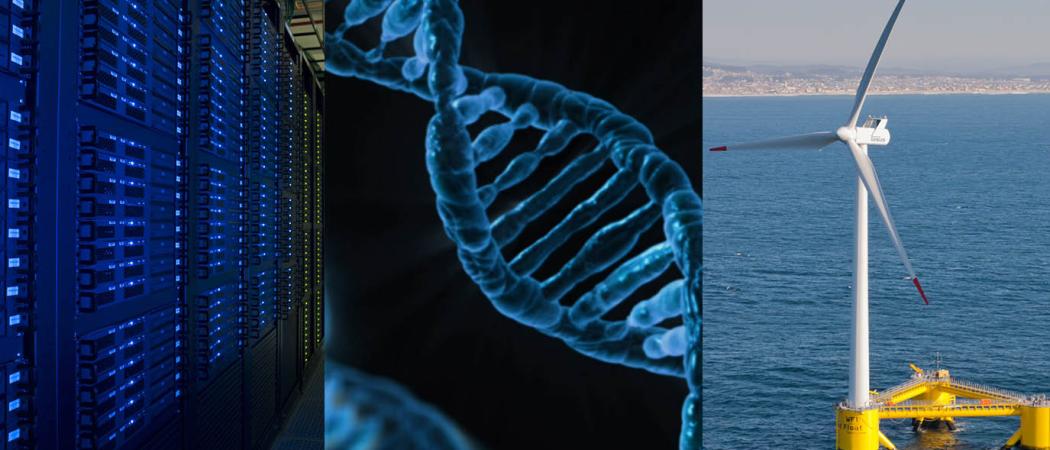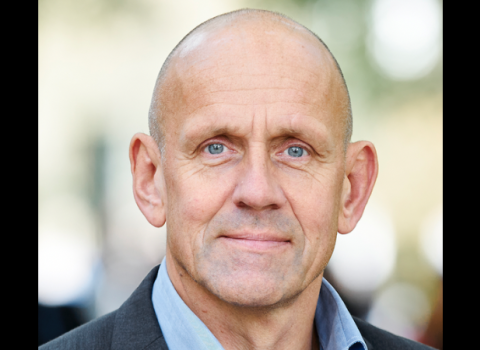3 emerging technologies that the experts say Europe needs to master: DNA scissors, mind-bending computers and floating wind turbines

What’s the next big thing in technology? And is Europe ready for it?
Those questions are perplexing policy makers around the European Union these days. The stakes are high: Europe, it’s often said, was late to the Internet party and ceded ground to now-dominant US companies. It started strong in mobile telephony, but retreated in the face of stiff Asian competition.
Nobody, in government or industry, wants to miss the next big tech wave – and that has led to a small industry of experts forecasting technology trends. The OECD, for instance, recently pooled studies from its developed-country members to identify 10 key technologies that will matter for the future. The list includes artificial intelligence, big data analysis, blockchain financial technology, synthetic biology and nano-materials. Most, it says, will pose social and ethical dilemmas – and several factors are needed for success, including ample public research support.
Here, we look briefly at three emerging fields: gene-editing, quantum computers and deep offshore wind production. Each has the potential to expand the scope of human possibilities – or create new problems. Either way, if Europe is to have a say in how they develop, it needs to matter in the marketplace. For these three technologies, we ask: can it?
- Making today’s supercomputers obsolete
Scientists are laying the foundation for arguably the most sophisticated piece of technology ever. A working quantum computer, experts say, could solve problems that even the most powerful supercomputers today cannot attempt. Several of the world’s biggest technology companies are investing in the field, with Google, Microsoft, Hewlett-Packard, Lockheed Martin and IBM each having dedicated quantum computing research groups.
So far, however, breakthroughs in the lab are difficult to replicate, and don’t support commercial activity. “There are devices tested right now which can measure gravity ten times more accurately. But any industry applications related to this discovery only show two to three times the improvement,” says Richard Murray, Innovate UK’s lead for emerging technologies and industries.
Europe has some notable skin in the game. The quantum computer with the most qubits so far — 20 — is being tested at the University of Innsbruck in Austria. European companies such as MuQuans, E2V and Thales are developing near-term applications in quantum sensing and metrology.
But it’s a complex picture. For commercial applications, “you could argue that the US is ahead of Europe,” says Peter Bentley, author and computer scientist at University College London. “In areas such as fundamental science and simulation, you could argue that Europe is ahead.”
A quantum machine would be an entirely different beast than the traditional PC, where the unit of information is binary digits or ‘bits’ and can have a value of either 1 or 0, representing on/off, true/false states. Its equivalent in a quantum system – called a quantum bit or qubit – can be both 1s and zeros at the same time, a state known as superposition. This gives quantum machines the theoretical ability to carry out trillions of calculations per second.
Drumming up investment for quantum has been a challenge, with some exceptions. The British government is investing £270 million over five years for four quantum technology hubs. In Germany, the government has made research into secure quantum communications a priority, with €9.5 million funding over three years, while the Netherlands is investing €130 million to build a quantum computer. A year ago, the European Commission announced that it would create a €1 billion research effort in the field, and it should start to invite grant applications later this year.
The effort may not be enough to fend off fierce competition from China and the US, says Anton Zeilinger, a quantum physicist at the University of Vienna. During the summer, China tested what may be the world’s first unhackable communication system, which uses quantum technology to encrypt data so securely that it can’t be got at without sounding an instant, hacker-proof alarm. “With the exception of the UK, no European country is investing enough in the field,” Zeilinger warns.
- The ‘unthinkable power to control evolution’
Despite the incredible number-crunching promise of quantum tech, probably no invention this century has as much far-reaching potential as the gene-editing tool Crispr/Cas9.
In 2012, Jennifer Doudna, a microbiologist at the University of California at Berkeley, and French microbiologist Emmanuelle Charpentier co-published the first findings pointing to a cheap and quick way to fix genes. Crispr/Cas9 allows scientists to precisely insert, delete or repair single letters of genetic code. To quote the title of Doudna’s memoir, the tool represents “the unthinkable power to control evolution”.
Already, the US is threatening to corner the market on gene-editing. The three companies that have licensed the technology for human therapeutics and floated — Editas Medicine, Intellia Therapeutics, and Crispr Therapeutics — have their R&D operations in Cambridge, Massachusetts, about a mile apart from each other. Crispr Therapeutics, a Basel-headquartered company, decided it could raise more money on the Nasdaq than on any stock exchange in Europe.
Finding funding for unproven tech in Europe is an age-old problem, according to Barbara Freischem, executive director of European Biopharmaceutical Enterprises, based in Brussels. “There’s simply not enough specialised funds here. You can travel around and see all the European funds in five days. Spend five days in New York and you still haven’t left Fifth Avenue,” she said.
That is not to say there are no big pushes here. In 2015, Crispr Therapeutics partnered with Bayer to launch a joint venture, with the German pharma giant pledging to invest at least $300 million over five years. Also, an Irish company called ERS Genomics is licensing Charpentier’s work for research and other non-therapeutic applications.
Patient trials are still in the planning stages, but gene editing may one day protect babies from a variety of hereditary conditions such as muscular dystrophy or cystic fibrosis, and enable plants to yield more food and resist drought.
European scientists must also compete with countries, like the US, where gene-edited products are not regarded as being the same as genetically-modified organisms (at least for now). Continued legal limbo on gene editing tech in Europe could see studies and advances in different member states put off or held up. The EU has not been able to decide yet on how to regulate gene-editing: without updated rules, it seems unlikely we’ll see human clinical trials in Europe in the near future.
- Wind in Europe’s sails
Wind may not sound like a very hot technology – but the challenges of deep water ‘floating wind farms’ could unlock many new opportunities for energy creation, and sustain Europe’s already-strong position in wind technologies.
The problem to be solved is simple to state: “All the very favourable shallow water depths – the low hanging fruit – are already taken by wind farms,” explains Bruno Geschier, chief sales and marketing officer with French manufacturer Ideol. Instead, the new challenge is deep-water wind farms. Conventional turbines have foundations embedded in a shallow sea floor; floating turbines, well, just float.
The further you go offshore, the stronger the wind gets, so the potential prize is a big one. Harnessing it could see Europe produce its electricity needs many times over, Geschier says. “In fact, without floating wind farms, the EU can’t achieve its renewable targets,” he predicts.
European companies such as Norwegian oil group Statoil, Ideol, and Spain’s Cobra, are leading the charge on the technology side, which is currently very expensive, and have launched world-first trials in waters off the coast of Norway, Scotland and Portugal. If the projects are a success, they will be pursued globally, for example in the steeply shelved coastlines off the US West Coast or Japan. This would help further drive down costs, and propel wind above other forms of low-carbon electricity generation.
The price of offshore wind energy has fallen far faster that anyone predicted. In 2014, the power generated by a forest of turbines out at sea was priced at around £150 per megawatt hour. Today this cost has dropped as low as £57.50. The dramatic price fall means companies such as Denmark’s Dong Energy can now develop offshore schemes without the help of subsidies.
The success of wind power also sets the stage for further innovations. The world’s biggest wind-turbine maker, Denmark’s Vestas Wind Systems, is working with US car and battery maker Tesla to figure out how to combine wind turbines and batteries, storing away power during breezy times to use when the air is still.



 A unique international forum for public research organisations and companies to connect their external engagement with strategic interests around their R&D system.
A unique international forum for public research organisations and companies to connect their external engagement with strategic interests around their R&D system.